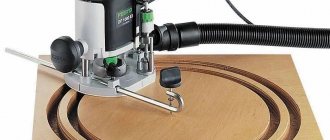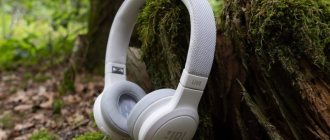Progress does not stand still, and gramophones and players have been replaced by CD systems, players and smartphones, on which you can also listen to your favorite tracks.
But the sound quality, even on the most expensive smartphones, is still noticeably lower than on good sound systems. This problem is solved by portable speakers - devices that allow you to listen to music with high-quality sound wherever a person is.
These devices are in demand among both young people and older people. Each audience has its own preferences for the main characteristics that the selected speakers should have. But there are also qualities that are important for everyone:
- Sound quality - it should be spacious, rich, preferably with good bass, so that the listener can enjoy the full spectrum of volume.
- The case - the service life of the device will depend on the material it is made of.
- The dimensions of the speaker - here it is important to understand for what purpose it is purchased: for traveling and walking, or for organizing parties in the country. In the first case, you need a compact model, in the second, the dimensions will not play a big role.
- Functionality – whether the speaker will broadcast only recorded tracks or can work as a radio.
- Connection type – will it be a wired connection, Bluetooth, Wi-Fi or NFC.
So which speakers will meet these criteria? The editors of Komsomolskaya Pravda have compiled a rating of the best models of portable speakers. At the same time, the price-quality ratio and the expert’s opinion were taken into account.
The best manufacturers of portable speakers with good sound
The most famous manufacturers of portable speakers:
- JBL is a company with more than 70 years of history. It produces a wide range of high-quality equipment, including portable speakers.
- Xiaomi is a Chinese corporation; it has repeatedly appeared in the top equipment of the mid-price segment. The acoustics for smartphones are high quality.
- Sony is a Japanese corporation and guarantees that its products meet the highest standards.
- Sven is a domestic brand that produces high-quality equipment known all over the world.
- Harman is an American brand that produces a wide range of electronics. Harman acoustics are very high quality.
There is no overpayment for the brand as such - all speakers are of high quality and have an adequate price. If you need to save money, look for a budget-class solution.
back to menu ↑
Acoustic Energy Aego BT2: the most metallic
A minimalistic metal cube from Acoustic Energy was already brought to the Hi-Fi & High End Show a couple of years ago. A significant part of its two-kilogram mass is accounted for not only by the body, but also by the battery, thanks to which the speaker can last up to 36 hours on a single charge at a volume of about 30%. With a volume of about 70%, the operating time is halved, but this is still a lot. It charges from an outlet.
Chopped edges, metal grilles, a compact control unit on the top panel - the device looks very serious and solid. Such a speaker can fit into a modern high-tech interior, or into a classic one: it seems that there is a place for this aluminum brick everywhere.
A silver grille on the front panel covers a pair of 2.5-inch broadband speakers, and passive bass radiators are built into the ends under the black grilles. The total power of the speaker is 40 W. You can connect to Aego BT2 via Bluetooth 4.2 with aptX and a cable, and from the built-in battery you can recharge the source via USB (though only if the battery charge is above 20%). This speaker is also equipped with a microphone, so it can be used as a public address system. And two speakers can be combined into a stereo pair.
This system is also primarily a home system - it does not have any water protection or a convenient handle for carrying from place to place. And the aluminum body hints that it is best placed next to modern laptops. But the battery is capacious.
What to look for when choosing a portable speaker
The main performance characteristics of portable speakers include:
- Power – the sound quality does not depend on it, but the volume is directly determined. The speaker requires a minimum of 1.5 W, which is slightly more than on the average smartphone. Premium models provide up to 60 W, the optimal figure is 15-20 W.
- Frequency range - the larger it is, the better the sound. For high frequencies, numbers of 10-24 thousand hertz are optimal. The “lows” should be around 20-500 hertz.
- Interfaces – the presence of Micro USB, USB and AUX 3.5 is very desirable, it will save you from many problems during operation of the speaker.
- Battery capacity – for wireless models, the ideal value is in the range of 1-2.5 thousand mAh, but focus on the power. Devices that have a capacity of no more than 4 thousand mAh ensure autonomy of the speaker for 24 hours.
- Weight, dimensions - look at the scope of application of the model. They usually don’t take a fancy oversized speaker for cycling or jogging, but for a picnic or small party a larger model will come in handy.
- Protection – look at the quality of the case; the device must be protected from moisture and dust. Again, a lot depends on the conditions of use of the device.
- Functionality - the presence of an equalizer, tuner, speakerphone, panoramic audio, Wi-Fi module is very desirable. If you are willing to pay for premium devices, look for additional goodies.
If you have any questions, please contact a store employee. It is better to clarify controversial points in advance.
back to menu ↑
Ruark Audio R1 Mk3: the most rounded yet
For the tiny Ruark R1 radio, you can optionally purchase a module with a 2,200 mAh battery. With it, the speaker will last about eight hours at best. The module is well thought out, it has a groove for the radio antenna, and it does not spoil the appearance of the speaker - for example, a small hump on the rear panel. The module is charged only from a power outlet.
I don’t know why, but this device always reminded me of compact Pignose guitar amplifiers. Maybe the reason for this is the wideband speaker covered with a large black mesh, although the Pignose has a speaker closer to the top edge of the case, while the Ruark has a speaker closer to the bottom. But overall the device looks, first of all, cute. The rounded shape, the calm combination of silver and black, the discreet white backlight of the screen - the whole design suggests that the device will fit neatly into an elegant interior.
Like the two previous ones, this model is not very suitable for camping: grass will probably cling to the fabric mesh, and there is no water protection. But taking it out to the balcony or to the park to read a book to the cozy rumbling of music is a completely feasible scenario.
At the same time, despite its compact size and pleasant appearance, the speaker is quite weighty - with a battery it weighs almost 2 kg, so it can only be called tiny in comparison with other Ruark components, but for the segment of wireless speakers the device is quite massive. The colors, by the way, also imply home-interior use - this includes veneer, black and white, and ocher.
The main difference between this model and the rest of the test participants is the gain. Even in the smallest models, Ruark uses class AB amplifiers, not D. This decision, in general, also affected the size of the system and its weight - although it produces only 9 W, it is quite enough for a 75 mm broadband speaker.
First of all, the R1 is a radio, which in addition has Bluetooth with aptX support. And, what’s nice, when connected wirelessly, the R1 displays the name of the track being played on its screen, rather than just writing something like “Bluetooth connected.”
Of the connectors, this box has not only a 3.5 mm input, but also USB for charging sources and a headphone output. Honestly, I don’t know in what situation a headphone output might be useful when using the Ruark R1 outside the home, but it’s there, and there’s nothing you can do about it.
Which portable speaker is better to choose?
When purchasing a portable speaker, you need to analyze the technical parameters and take into account personal feelings. It is important that you like a particular model - in terms of sound quality and ease of use. There is no middle ground; all recommendations are subjective. For ease of searching, the models in the rating are divided into categories - budget class, price-quality, power, etc.
Be sure to consider the purpose of your purchase. There are good models for indoor and outdoor use. If you are looking for an option for picnics or the beach, moisture protection is a must, and the battery must be capacious. There are no special requirements for speakers for home parties at all; if you need powerful sound, you will have to spend money. Design, like a brand, is a matter of taste; the cost depends on the financial capabilities of the buyer. We recommend checking online reviews before making your final choice. There are speakers with flash drives, radio, karaoke.
DALI Katch: the most familiar
This was not the first time both we and the exhibition visitors had seen this column. A weighty oval pancake with speakers located on both the front and rear walls - each has one 21 mm tweeter, one 90 mm mid/bass driver and one passive radiator.
This is a powerful, fairly large speaker - 25 W of D-class allocated to each channel, and for ease of portability it is equipped with a leather loop that is very comfortable to grip. Weighing just over a kilogram, the handle is an important element.
The Katch's buttons are located on the top edge - next to the logo and the hinge mount. In addition to the standard buttons for turning on, connecting to a source and adjusting the volume, there is also a special key that switches the sound mode between a more bassy “warm” and a smoother “clean” sound. By the way, the ends of the speaker are aluminum, and the grills are plastic, with an unusual triangular mesh.
A huge advantage of this model is its style diversity: Katch is available in several unusual colors, where muted shades dominate, and they are echoed by red-brown leather. Still, the appearance of a portable device is one of the main parameters, so the ability to match the speaker to your favorite trekking boots is important.
But the system is still aimed at indoor use. This is supported by the absence of any water protection and a special DSP function that adjusts the sound depending on placement - in an open space or against a wall. Katch sources can be connected via Bluetooth (4.0 with aptX and NFC) or a cable with a 3.5 mm plug. There is also a stereo pair mode, but we did not test it, since we only had one Katch.
A considerable part of the mass of the speaker itself is the battery - it will last for 24 hours of continuous operation (in an ideal world), and the system can share the charge with a source connected via USB. Another hint that the speaker is working at home is that it cannot be recharged using a power bank - it has a round connector, not MicroUSB.
DreamWave Elemental sound: simple and dull
Elemental continues the Explorer's ideas of neutrality, but adds volume and bass thud. It would seem that from such a hefty bazooka you expect a juicy punch, but what you get is a little different. And its volume is not deafening - Kilburn II outplays it.
Due to the muted low end, quite deep and dense vocals came to the fore, surrounded by unexpectedly detailed highs. Otherwise, the character is very similar to Elemental - simple, without showing off, without excessive lifestyle.
But if in the case of the Elemental such a character - or rather, its absence - is not so surprising, then with the Explorer the situation is different, since it is a hefty, damn it, military-style speaker, with hard plastic, with hexagonal grills.
You simply expect completely different behavior from her - but she is quite gently humming the soundtrack from “Gris”, shining a flashlight at the wall. And this dissonance is perhaps more frustrating than deafness.
Advantages: the sound is quite intelligent for such a colossus
Disadvantages: unreasonable expectations
conclusions
When choosing a portable speaker, you need to remember the following:
- key technical indicators are total output power, frequency range and battery life ;
- Pay attention to the type of battery, maximum charging time , as well as the presence of a well-thought-out moisture protection system ;
- the presence of a built-in microphone may affect the cost of the device, but working with it will be much more convenient;
- It is also necessary to take into account the presence of additional functionality - many users prefer models with a radio receiver and a built-in microphone ;
- The dimensions and weight of the structure play an important role in the choice of wireless equipment - ideally, the device should be easy to use and transport.
Sound Marshall Kilburn II: compact amp
Is there any doubt that Marshall is best at playing classic rock? Still, it’s difficult to spoil a rich pedigree. Indeed, we have before us the recognizable sound of a guitar combo. The only thing missing is a guitar input.
The knobs on top, by the way, really help you customize the sound and change it quite seriously, so the speaker turns out to be quite universal. Her main genre is, after all, guitar, but skillful twirling of the controls can add to her lifestyle or, on the contrary, elegance.
It’s interesting that the Kilburn II plays volumetrically – it seems that one of its speakers is located on the rear panel. This makes the sound very large. This speaker also turned out to be the loudest among the participants in our test, and it delivered this volume in the way that Marshall canons require - fervently, assertively.
I have one complaint about it: when connected to a laptop with Windows 10, it fell off every time after 3-5 minutes. At the same time, Kilburn II was friends with other sources without any problems at all.
Advantages: loud, with controls you can change the sound character
Disadvantages: not friendly with Windows 10
Marshall Kilburn II: the rockiest
Marshall wireless speakers in their design follow the canons laid down by the company decades ago when creating the first guitar amplifiers. Black dermantine, silver mesh with a white vinyl logo, familiar proportions, analogue knobs on the top panel.
The whole appearance of this speaker encourages you to turn on something from old British or American rock. The mesh covering the speakers, by the way, is more reminiscent of a microphone than standard amplifier grilles. But it still looks cool.
For convenience, the developers screwed a handle to the column, which makes it quite convenient to carry the device. Compared to the first generation Kilburn, the updated version lost half a kilo and was more careful with golden accents. It also acquired IPX2 water protection (not the most serious, but at least something), received plastic corners on the body that save you from the vicissitudes of fate, and became more powerful: each of the two tweeters accounts for 8 W, and the woofer is assigned as many as 20. Behind it helps to bass the small bass reflex port.
The battery will last for 20-odd hours of operation in gentle mode. The life time on one charge was increased, including through the use of less power-hungry Bluetooth 5.0. This version of the interface also made it possible to implement multi-connection: two sources can be connected to the speaker at the same time. There is also a 3.5 mm input.
On the top edge there are three knobs - volume, with which the speaker is turned on, and bass and treble controls. On the side of the controls is a red battery indicator, and on the other side there is a button for connecting to wireless sources.
This column opens a list of those devices that are not so scary to take with you into nature. Yes, its water protection is not the most serious, but Marshall engineers still tried to prepare Kilburn II for non-greenhouse living conditions. One important point is that not MicroUSB or USB-C is used for charging, but a round plug.
DreamWave Explorer: the most thematic
At first glance at the DreamWave Explorer, it becomes clear that the speaker was created for outdoor trips. Rubberized body, hard plastic and green inserts on a dark gray background, rough, clear shape, large buttons - everything about it provokes a trip to the barbecue. There is also a completely graphite version, which combines several shades of gray, but the version with green inserts will be livelier.
The body is durable, but the speaker, despite its harsh appearance, is less protected from water and dust than the previous Envaya Mini - only according to the IPX5 standard. So you shouldn’t throw it into the lake, but the Explorer won’t be afraid of rain and roadside dust either.
Three connectors are hidden under the plug on the top panel - MicroUSB for charging the speaker itself, USB for charging sources, and a 3.5 mm connector for connecting them. Nearby there are four huge buttons. By the way, the speaker comes with a bicycle mount—there is a thread for it in the bottom panel. You can screw something else in there, for example, some kind of tripod.
Inside the speaker there are two broadband drivers with a diameter of 45 mm and two passive radiators. This thing works with a 15 W amplifier. The Bluetooth 4.0 module is ready to receive a signal encoded in aptX. There is also a hands-free function - so you can talk on the phone with this speaker.
The device’s battery will last for 18 hours ideally and 6 hours at maximum volume. He is ready to share the charge of his 6,000 mAh with sources. And the column weighs almost 700 grams.
Denon Envaya Mini DSB-150BT: the most buoyant
You can throw the little Denon Envaya Mini into the bathtub, keep it there for half an hour and pull it out - and nothing will happen to the speaker. And all thanks to IP67 water protection, which also saves the system from dust. Although, it seems to me that something will still stick to the fabric grill.
In cross-section, the column resembles a trapezoid with rounded corners. On one of the rubber sides there are as many as five buttons - in addition to power, volume control and Bluetooth connection, there is a separate button for receiving calls. Yes, this speaker also has a microphone.
From two of these you can assemble a stereo pair by pressing two keys at the same time. There are three speakers in such a small case: two broadband speakers of 40 mm in diameter and a rectangular passive radiator. The built-in amplifier delivers 8.5 W to each of the two channels.
The Bluetooth module operates using the 4.1 protocol and supports aptX, and is also equipped with a multi-connection function and remembers up to eight sources, but is only ready to play with two at a time.
The Envaya Mini itself weighs a little more than 0.5 kg, but it comes with a loop that can be attached to the case if desired. On the back of the device, under a rubber plug, two connectors are hidden - MicroUSB for charging and 3.5 mm for connecting non-wireless sources. The fact that the Envaya Mini uses MicroUSB for charging makes it truly portable. Its own charge will be enough for 11 hours of work, but it will be possible to feed it in almost any conditions.
DreamWave Elemental: the biggest
The largest representative of our test is the three-kilogram DreamWave Elemental. This bazooka-like speaker is not a new product, but we only managed to get to know it closely now.
Despite its impressive size, the Elemental is only twice as powerful as its little sister, the Explorer, producing 30 watts. It has four speakers - two broadband speakers with a diameter of 50 mm and two tweeters of 20 mm each. There are no passive radiators, but bass reflexes, cleverly hidden in the design, help the system bass.
Interestingly, all the speakers are located on one side of the column. Similar-sized models from other manufacturers usually have speakers in both the front and rear, providing 360° sound. But they also cost, of course, noticeably more.
The speaker itself is protected from dust and water in the same way as the Elemental - according to the IPX5 standard. Visually, it also continues the tradition of rugged hiking speakers: it is also available in gray or gray-green colors and, in addition, has acquired a hard rubberized carrying handle, which, considering its weight of more than three kilograms, is a useful addition. The grills are screwed on with harsh hexagons, and the body itself is replete with ribs.
At one end there are four huge rubber buttons that can be pressed even with your heel. Hidden between them is an LED flashlight, and it is very bright. It has several operating modes, including SOS mode. At the other end, under a rubber plug, there are connectors hidden - a 3.5 mm input for sources, a round plug for self-charging and USB for charging sources. The 12,000 mAh battery, according to the manufacturer, is enough for 14 hours of operation.
The Bluetooth module is apparently the same as the Explorer - 4.0 with aptX support. And, by the way, the speaker has a microphone.











